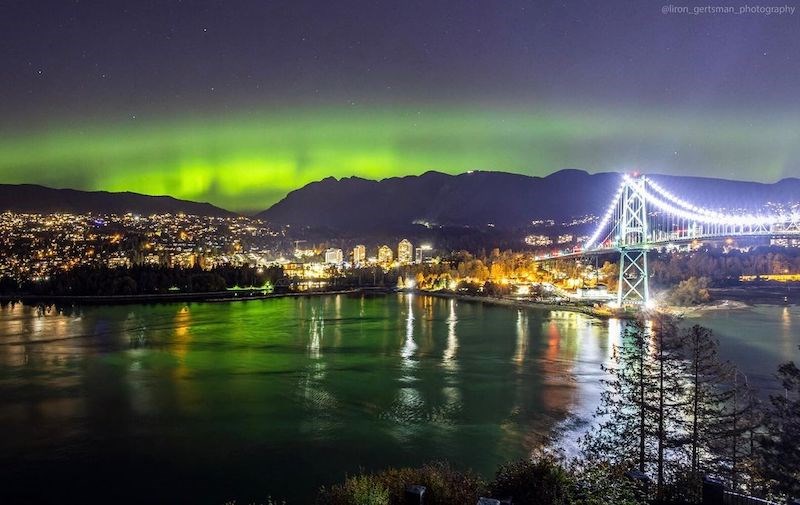Metro Vancouver sky-watchers, rejoice!
A flurry of vibrant dancing lights could sparkle in the heavens over the coming days — and one of the displays could be particularly breathtaking.
The National Oceanic and Atmospheric Administration (NOAA)'s Space Weather Prediction Center has issued a G1 (Minor) geomagnetic storm warning for Wednesday (March 30), a G3 (Strong) warning for Thursday, and a G2 (Moderate) warning for Friday.
"Aurora may be visible over the northern tier states if the conditions are favorable," explains the department.
G3 Watch now out for 31 March due to combined CME effects. Also, a G1 Watch is in place for 30 Mar due to CME shock arrival and a G2 Watch for 1 Apr due to lingering CME influences. Visit https://t.co/4CNTc1qJlT for latest info and https://t.co/PuIgIldyfa for story. @NWS @NOAA pic.twitter.com/ftMJaqgfjU
— NOAA Space Weather (@NWSSWPC) March 29, 2022
On Wednesday, the solar activity will be high. According to the University of Fairbanks (UAF), active auroral displays will be visible overhead from Inuvik to Thunder Bay, Ontario and down to places south of the border including Seattle, Chicago, and Boston.
The university's online aurora monitor map shows what regions the aurora's green glow will likely reach, as well as other areas where there is less of a possibility. Additionally, there is a brief description below the map of the aurora activity on that particular day. You can switch to other days to see the forecast, too.
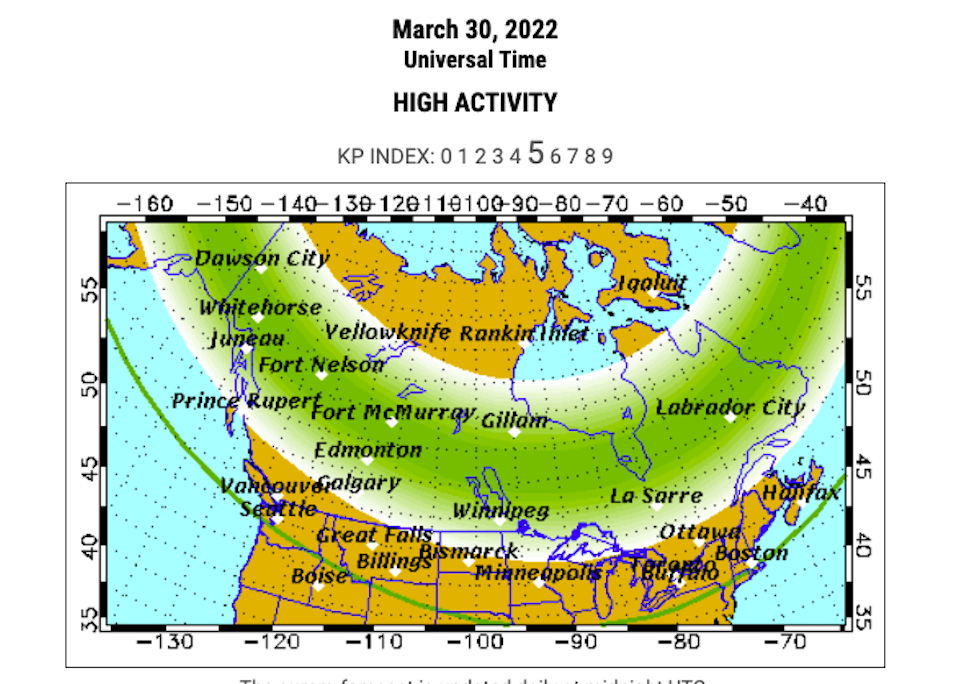
Thursday will provide the best opportunity to observe the northern lights in all of their celestial glory. The forecast includes particularly high auroral activity visible form "Inuvik, Yellowknife, Rankin and Iqaluit, to Portland OR, Cheyenne, Lincoln, Springfield, and New York City, and visible low on the horizon as far south as Carson City, Oklahoma City, and Raleigh," according to UAF.
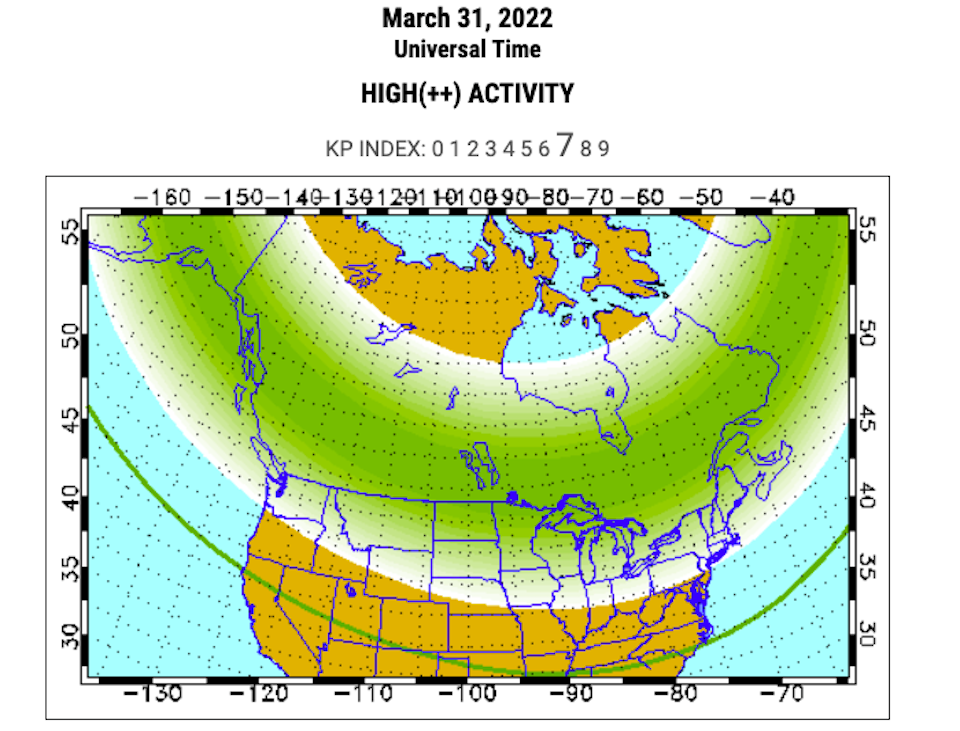
There are also opportunities to catch the green glowing lights on Friday, Saturday, and Sunday, although they might not be as vibrant as Thursday's display.
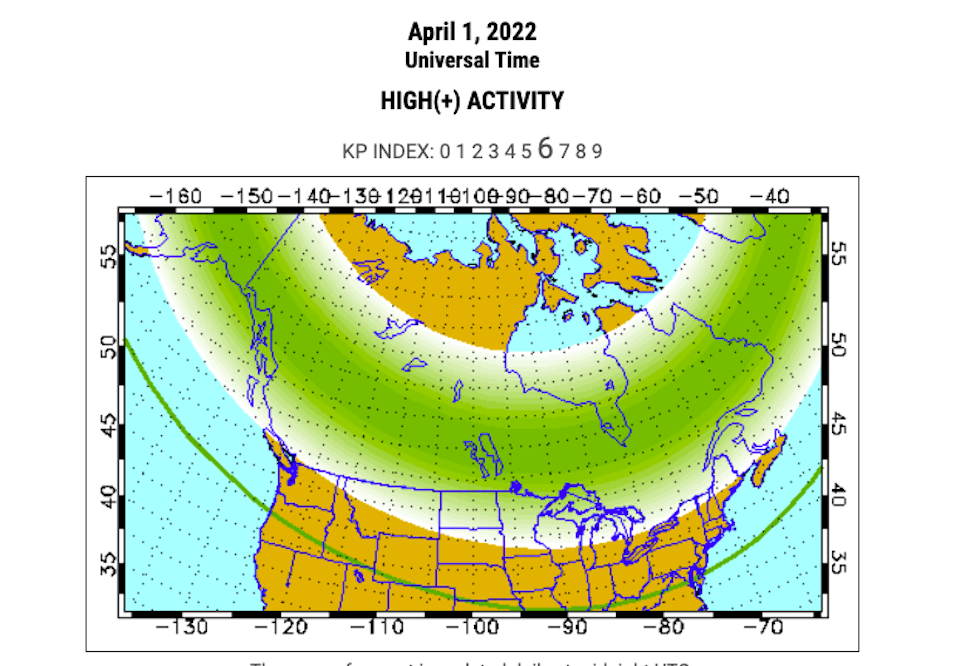
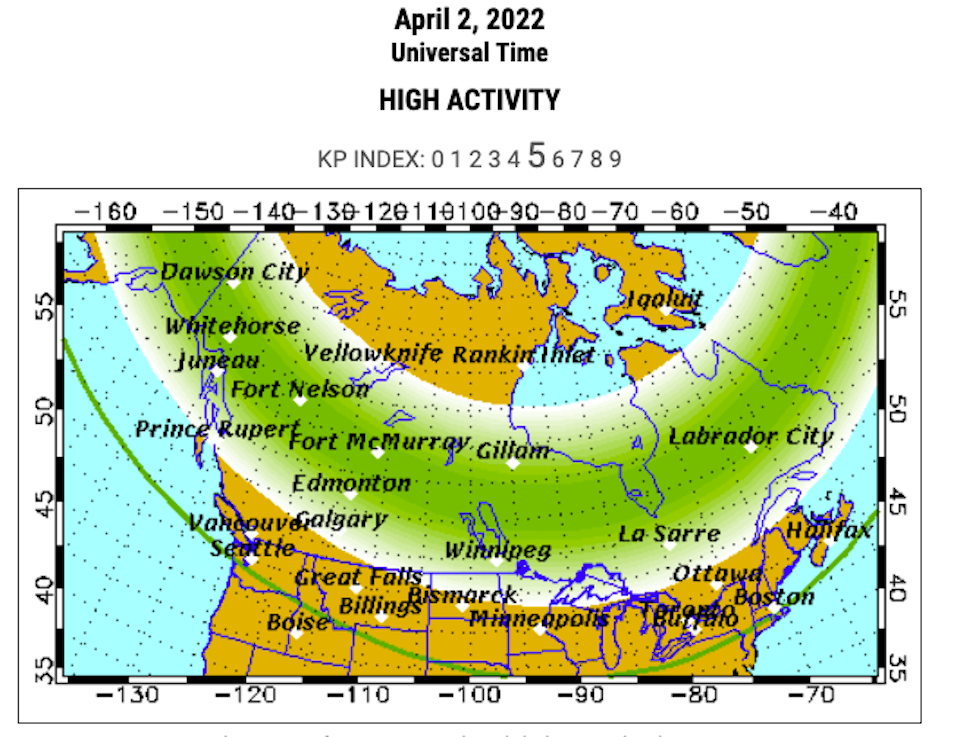
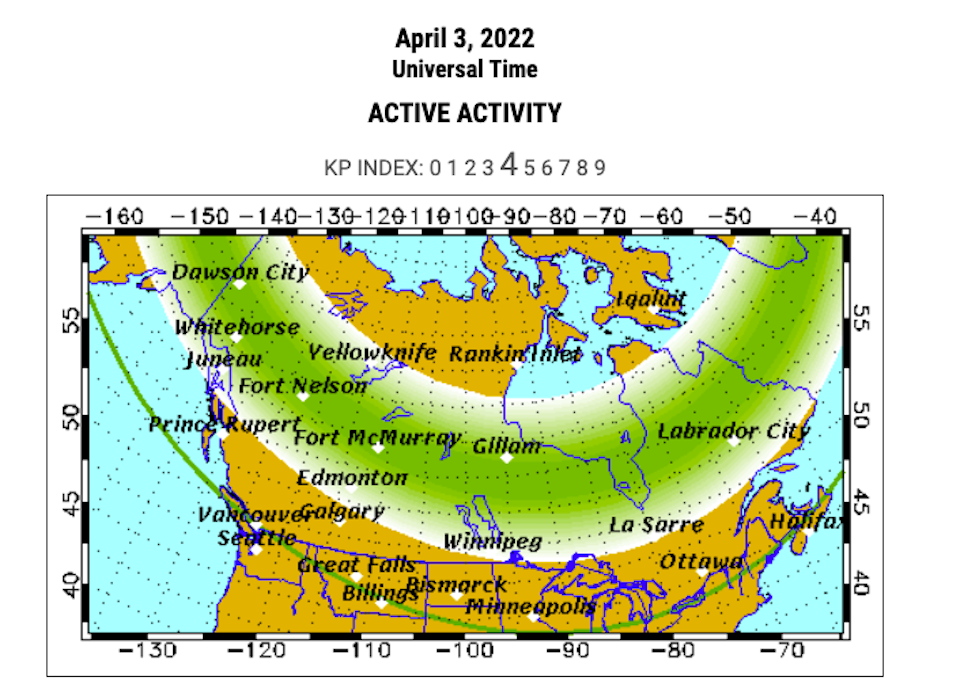
What is the best time of night to see aurora?
UAF recommends that you plan to be out for three or four hours around midnight. That said, the dancing lights are active throughout the night. Since clear sky and darkness are both essential to see aurora, the best time is dictated by the weather and by the sunrise and sunset times. The moon is also very bright and can make it more difficult to view the aurora, so lunar cycles should be taken into account.
Find out more information about when to see the vibrant display with the UAF's aurora monitor map.
